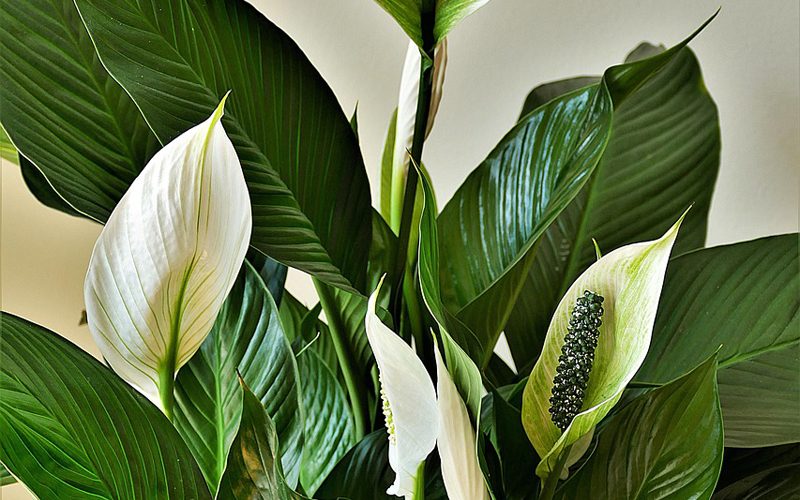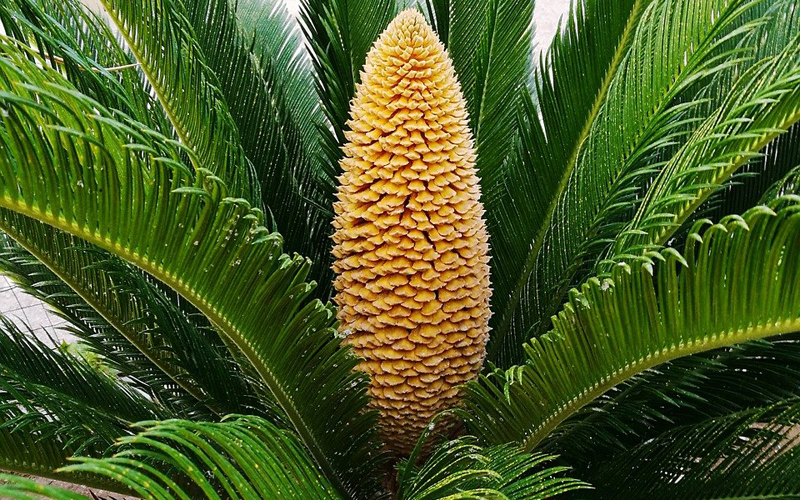 While houseplants add an air of charm and shine to
the atmosphere in a household, being aware of the
underlying havoc that they’re waiting to wreak is
important, especially if you have pets or children
who’d inadvertently touch them.
While houseplants add an air of charm and shine to
the atmosphere in a household, being aware of the
underlying havoc that they’re waiting to wreak is
important, especially if you have pets or children
who’d inadvertently touch them.
 Ignorant trends about bringing in specific
houseplants is the reason why the deadliest plants
make it to the “Common Indoor Plants You Should
Have” list. However, here is a list of the most
common indoor plants that you should be wary of
and that could impact the general well-being of the
people in your house!
Ignorant trends about bringing in specific
houseplants is the reason why the deadliest plants
make it to the “Common Indoor Plants You Should
Have” list. However, here is a list of the most
common indoor plants that you should be wary of
and that could impact the general well-being of the
people in your house!
Peace Lilies
 While peace lilies emanate a radiant white
halo above itself, its work is far from peaceful
and can gravely injure pets and humans,
especially dogs. The white hooded flower in all
its glory contains irritants that can cause major
inflammation in the airways of our body.
Peace Lilies from the flower all the way
through its stem densely consists of irritants.
While peace lilies emanate a radiant white
halo above itself, its work is far from peaceful
and can gravely injure pets and humans,
especially dogs. The white hooded flower in all
its glory contains irritants that can cause major
inflammation in the airways of our body.
Peace Lilies from the flower all the way
through its stem densely consists of irritants.
 While peace lilies emanate a radiant white
halo above itself, its work is far from peaceful
and can gravely injure pets and humans,
especially dogs. The white hooded flower in all
its glory contains irritants that can cause major
inflammation in the airways of our body.
Peace Lilies from the flower all the way
through its stem densely consists of irritants.
While peace lilies emanate a radiant white
halo above itself, its work is far from peaceful
and can gravely injure pets and humans,
especially dogs. The white hooded flower in all
its glory contains irritants that can cause major
inflammation in the airways of our body.
Peace Lilies from the flower all the way
through its stem densely consists of irritants.
 The element contains a compound which in turn is
made up of calcium oxalate crystals that appear to be
razor sharp. Inflamed, irritated, swollen muzzles can
also lead to vomiting, diarrhea and difficulty in
breathing because of an inflamed airway.
The element contains a compound which in turn is
made up of calcium oxalate crystals that appear to be
razor sharp. Inflamed, irritated, swollen muzzles can
also lead to vomiting, diarrhea and difficulty in
breathing because of an inflamed airway.
Sago Palm
 Sago Palms are pretty, ornamental plants that
package themselves with toxins that could gravely
affect pets upon ingestion.
Along with the symptoms of mouth inflammation,
diarrhea and vomiting, the palm’s adverse effect can
be seen acting on the animal’s liver leading to fatal
liver failures.
Sago Palms are pretty, ornamental plants that
package themselves with toxins that could gravely
affect pets upon ingestion.
Along with the symptoms of mouth inflammation,
diarrhea and vomiting, the palm’s adverse effect can
be seen acting on the animal’s liver leading to fatal
liver failures.
 Sago Palms are pretty, ornamental plants that
package themselves with toxins that could gravely
affect pets upon ingestion.
Along with the symptoms of mouth inflammation,
diarrhea and vomiting, the palm’s adverse effect can
be seen acting on the animal’s liver leading to fatal
liver failures.
Sago Palms are pretty, ornamental plants that
package themselves with toxins that could gravely
affect pets upon ingestion.
Along with the symptoms of mouth inflammation,
diarrhea and vomiting, the palm’s adverse effect can
be seen acting on the animal’s liver leading to fatal
liver failures.
The plant contains a deadly toxin called Cycasin that
doesn’t wait to act on animal’s liver. The level of
toxin ingested acts according to the size and build of
the dog and also depends on how fast the toxin starts
its work.
Dieffenbachia
 While these plants can thrive with forgetful gardeners and
minimal care, their humongous green-ish yellow leaves sting
with irritant compounds and can once again cause
inflammation, vomiting and diarrhea.
While Dieffenbachias make for extremely convenient plants
that blossom in humid environments and require miniscule
amounts of attention, it becomes paramount to place them in
locations that are not in the direct reach of children and pets
because of the calcium oxalate crystals and their menacing
ability of puncturing and inflaming mouth tissues.
While these plants can thrive with forgetful gardeners and
minimal care, their humongous green-ish yellow leaves sting
with irritant compounds and can once again cause
inflammation, vomiting and diarrhea.
While Dieffenbachias make for extremely convenient plants
that blossom in humid environments and require miniscule
amounts of attention, it becomes paramount to place them in
locations that are not in the direct reach of children and pets
because of the calcium oxalate crystals and their menacing
ability of puncturing and inflaming mouth tissues.
 While these plants can thrive with forgetful gardeners and
minimal care, their humongous green-ish yellow leaves sting
with irritant compounds and can once again cause
inflammation, vomiting and diarrhea.
While Dieffenbachias make for extremely convenient plants
that blossom in humid environments and require miniscule
amounts of attention, it becomes paramount to place them in
locations that are not in the direct reach of children and pets
because of the calcium oxalate crystals and their menacing
ability of puncturing and inflaming mouth tissues.
While these plants can thrive with forgetful gardeners and
minimal care, their humongous green-ish yellow leaves sting
with irritant compounds and can once again cause
inflammation, vomiting and diarrhea.
While Dieffenbachias make for extremely convenient plants
that blossom in humid environments and require miniscule
amounts of attention, it becomes paramount to place them in
locations that are not in the direct reach of children and pets
because of the calcium oxalate crystals and their menacing
ability of puncturing and inflaming mouth tissues.
Cyclamen
 Cyclamen also known as Persian Violet is a houseplant
that’s commonly sold in supermarkets. Apart from its
bright-coloured flowers and dark-coloured leaves, it
poses a threat to pets and children upon ingestion.
Like also toxic plants, cyclamen also contains an irritant
called saponins which when ingested leads to excessive
drooling, vomiting and diarrhea. Saponins also leads to
heart failures which are more than often fatal, in
addition to increased abnormal heartrates and seizures.
Cyclamen also known as Persian Violet is a houseplant
that’s commonly sold in supermarkets. Apart from its
bright-coloured flowers and dark-coloured leaves, it
poses a threat to pets and children upon ingestion.
Like also toxic plants, cyclamen also contains an irritant
called saponins which when ingested leads to excessive
drooling, vomiting and diarrhea. Saponins also leads to
heart failures which are more than often fatal, in
addition to increased abnormal heartrates and seizures.
 Cyclamen also known as Persian Violet is a houseplant
that’s commonly sold in supermarkets. Apart from its
bright-coloured flowers and dark-coloured leaves, it
poses a threat to pets and children upon ingestion.
Like also toxic plants, cyclamen also contains an irritant
called saponins which when ingested leads to excessive
drooling, vomiting and diarrhea. Saponins also leads to
heart failures which are more than often fatal, in
addition to increased abnormal heartrates and seizures.
Cyclamen also known as Persian Violet is a houseplant
that’s commonly sold in supermarkets. Apart from its
bright-coloured flowers and dark-coloured leaves, it
poses a threat to pets and children upon ingestion.
Like also toxic plants, cyclamen also contains an irritant
called saponins which when ingested leads to excessive
drooling, vomiting and diarrhea. Saponins also leads to
heart failures which are more than often fatal, in
addition to increased abnormal heartrates and seizures.